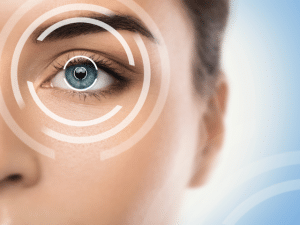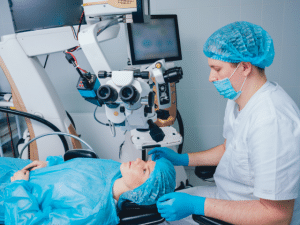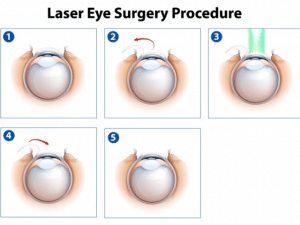LASEK
LASEK in Iran
Best LASEK clinic in Iran
Best LASEK hospital in Iran
LASEK in Iran is a type of refractive eye surgery that uses a laser to reshape the cornea and correct vision problems such as myopia, hyperopia, and astigmatism. The procedure is minimally invasive and typically has a shorter recovery time than other types of eye surgeries. With highly skilled eye surgeons and advanced technology, LASEK in Iran can help improve your vision and quality of life. Here are the best clinics for LASEK in Iran:
- Noor clinic
- Negah hospital

LASEK cost in Iran
There is a significant difference between the cost of LASEK in Iran and other countries. The most important factors for its low price of it in Iran are:
- A large number of LASEK clinics in Iran.
- A large number of applicants for LASEK in Iran.
LASEK cost in Iran varies depending on the cataract surgery and the hospital. The average cost of cataract surgery in Iran is $1,000 (both eyes).
LASEK cost in Iran in comparison with other countries
This surgery costs $3.000 in the U.S., $2.700 in Europe, $2.000 in Thailand, and $1.200 in Turkey.
Best LASEK surgeon in Iran
One of the most important factors for choosing a good surgeon at LASEK in Iran is the doctor has done many LASEK surgeries.
You can find the best doctors for LASEK in Iran on our website by following their experiences.
Why should you travel to Iran for a LASEK?
Many patients travel to Iran for LASEK. One of the reasons for this matter is Iranian specialists and ophthalmologists who have high surgery success rates.
- Low cost of LASEK in Iran
- Low cost of accommodation in Iran
- Well experienced doctors
- The high number of LASEK in Iran
Diagnostic and surgical centers accordance with today’s European standards is performing the highest quality operations in Iran. Another reason for LASEK in Iran is its lower cost compared to other countries.
How long should I stay for LASEK In Iran?

About LASEK
Lasek is a laser-based surgery combination of Lasik and PRK (photorefractive keratectomy). This method is used for astigmatism, short-sightedness, and farsightedness. The most important difference between Lasik and Lasek is in the focal effect point of the excimer laser on the cornea. In the Lasik method, the laser hits the new spot on the cornea after the removal of a corneal layer and then scraping is performed. However, in the Lasek method, the laser beams will hit the corneal surface without the removal of the corneal layer and only after the removal of the covering tissue of the cornea.
Recommended for
- Patients with farsightedness
- Patients with shortsightedness
- Patients with astigmatism
- Patients who are not suitable for Lasik surgery
Before LASEK
The doctor will examine the eyes and measures the thickness of the cornea, eye pressure, pupil dilation, and refraction in addition to the medical history of the patient and then makes the final decision on whether the patient is a suitable candidate for surgery or not. Usage of the contact lenses must be stopped three days before the surgery.
During LASEK
During the surgery, eyelids and eye surrounding tissues are disinfected with a disinfecting agent. Desensitizing and antibiotic drops are applied to the eyes, and the patient lies down under a microscope on the surgery bed. Eyelids are kept open utilizing a particular gadget so that the patient won’t be able to blink. The eye will be washed with a serum. The cornea-protecting layer is removed. The surgeon asks the patient to stare at the little red beam inside the microscope. The surgeon uses the excimer laser to correct, shortsightedness, farsightedness, or astigmatism.

Anesthesia
Total anesthesia or local desensitization is used for Lasek surgery.
Duration
It takes about half an hour to an hour to complete the surgery.
Recovery
Post-operation care
- Taking a shower or washing the face should be postponed to the next day
- You can perform all your daily activities, like driving after the Lasek surgery. However, it is recommended to postpone driving until the eye doctor has confirmed everything is OK
- Sunglasses are recommended to prevent direct sunlight damage to the eyes
Possible discomforts
- It may feel like a foreign object is in the eye for 1-4 days after the Lasek surgery
- Vision may diminish in dim light environments up to 12 months after the Lasek surgery
- Dry eyes may be experienced, and there may be a need for eye drops
- Unclear and foggy vision for the first few months from the surgery
Highlights
Success in surgery
The success rate of the Lasek surgery is 98%, and most patients will enjoy a 20/20 vision afterwards.
Not recommended for
- Patients below 21 years of age
- Diabetic patients
- Pregnant women and breastfeeding mothers
- Patients with immune system disorders
- Patients with cataract or glaucoma potential risks
- Infection
- Vision deterioration
- Thickness of cornea